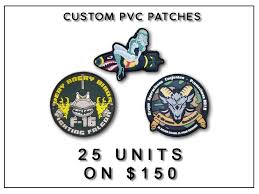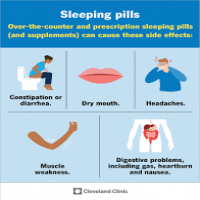Custom Military Patches: A Comprehensive Guide

Strong 8k brings an ultra-HD IPTV experience to your living room and your pocket.
Custom military patches are more than just a piece of fabric; they symbolize honor, duty, and camaraderie. They serve as a visual representation of a unit's identity, achievements, and heritage. From classic embroidered patches to modern PVC designs, custom military patches come in various forms, each with unique features and benefits. In this comprehensive guide, we'll delve into the world of custom military patches, exploring their history, types, design elements, production process, and applications.
1. The History of Military Patches
Military patches have a storied history that dates back to ancient times. Armies have used symbols and insignia to denote rank, unit, and allegiance. Here’s a brief overview of the evolution of military patches:
a. Early Beginnings
Ancient Armies: In ancient civilizations such as Rome and Greece, soldiers wore insignia and symbols on their armor to identify their legions and ranks.
Medieval Era: During the medieval period, knights displayed their coats of arms on surcoats and shields, which can be considered early forms of patches.
b. Modern Military Patches
World War I: The use of patches became more standardized during World War I. Soldiers began wearing patches to identify their division and regiment.
World War II: Patches gained popularity in World War II, with each branch of the military adopting distinct insignia. Patches were used to boost morale and foster a sense of unity.
Post-War Era: After World War II, patches continued to evolve, incorporating more sophisticated designs and materials.
2. Types of Custom Military Patches
Custom military patches come in various types, each serving different purposes and offering distinct advantages. Here are some of the most common types:
a. Embroidered Patches
Classic and Traditional: Embroidered patches are the most traditional type, featuring thread-stitched designs on fabric backings. They are known for their durability and classic appearance.
Versatile and Customizable: These patches can be made in various shapes, sizes, and colors, allowing for detailed and intricate designs.
b. Woven Patches
Smooth and Detailed: Woven patches are similar to embroidered patches but use thinner threads, allowing for more detailed and intricate designs. They have a smooth surface and a higher level of detail.
Suitable for Complex Designs: These patches are ideal for designs with small text or intricate patterns that require precision.
c. PVC Patches
Durable and Weather-Resistant: PVC patches are made from polyvinyl chloride, making them extremely durable and weather-resistant. They are perfect for outdoor and tactical use.
3D and Modern Look: PVC patches can have a three-dimensional effect, adding depth and a modern appearance to the design.
d. Leather Patches
Elegant and Timeless: Leather patches offer a sophisticated and timeless look. They are often used for special commemorative purposes or to add a touch of elegance to uniforms and gear.
Durable and Long-Lasting: Leather patches are known for their durability and can withstand harsh conditions.
e. Printed Patches
Vibrant and Detailed: Printed patches use high-quality printing techniques to create vibrant and detailed designs. They are suitable for designs with complex colors and gradients.
Cost-Effective: These patches are often more cost-effective for large orders, making them ideal for mass production.
3. Design Elements of Custom Military Patches
Designing a custom military patch involves several key elements that convey the unit’s identity, mission, and heritage. Here are some essential design elements:
a. Symbols and Insignia
Unit Emblems: Each military unit often has a unique emblem that represents its identity and heritage. These emblems are central to the patch design.
Military Symbols: Common symbols such as eagles, stars, swords, and shields are frequently used in military patches to denote strength, courage, and honor.
b. Colors
Branch Colors: Different branches of the military have specific colors associated with them (e.g., green for the Army, blue for the Navy). These colors are often incorporated into patch designs.
Symbolic Colors: Colors can have symbolic meanings (e.g., red for valor, blue for loyalty). Choosing the right colors can enhance the patch’s message.
c. Text and Mottoes
Unit Names and Numbers: Including the unit’s name and number on the patch helps identify the unit and its members.
Mottoes and Slogans: Many military units have mottoes or slogans that reflect their mission and values. These can be incorporated into the patch design.
d. Shapes and Borders
Standard Shapes: Common shapes for military patches include circles, shields, rectangles, and triangles. The shape can influence the overall look and feel of the patch.
Borders and Edges: The type of border (e.g., merrowed edge, hot-cut edge) can affect the patch’s durability and appearance.
4. The Production Process of Custom Military Patches
Creating custom military patches involves several steps, from initial design to final production. Here’s an overview of the process:
a. Design and Approval
Concept and Sketch: The process begins with creating a concept or sketch based on the client’s requirements. Designers work closely with the client to ensure the design meets their vision.
Digital Proof: A digital proof of the patch is created, showing the design in detail. The client reviews and approves the proof, making any necessary adjustments.
b. Material Selection
Fabric and Thread: For embroidered and woven patches, the appropriate fabric and thread colors are selected based on the design. High-quality materials ensure durability and vibrant colors.
PVC and Leather: For PVC and leather patches, the appropriate materials are chosen to match the design’s requirements.
c. Manufacturing
Embroidery and Weaving: For embroidered and woven patches, the design is transferred to embroidery machines or looms. The machines stitch the design onto the fabric, creating the patch.
PVC Injection: For PVC patches, the design is created using molds. PVC material is injected into the molds to form the patches.
Laser Etching and Printing: For leather and printed patches, laser etching or printing techniques are used to create detailed and precise designs.
d. Cutting and Edging
Die-Cutting: The patches are cut into their final shapes using die-cutting techniques. This ensures clean and precise edges.
Edge Finishing: Depending on the type of patch, different edge finishing techniques (e.g., merrowed edge, hot-cut edge) are applied.
e. Backing Options
Sew-On Backing: For patches that will be sewn onto uniforms or gear, a sew-on backing is used.
Iron-On Backing: Iron-on backing allows for easy application using heat.
Velcro Backing: Velcro backing provides a versatile option, allowing patches to be easily attached and removed.
f. Quality Control
Inspection: Each patch undergoes a thorough quality control inspection to check for any defects or inconsistencies. This ensures that the final product meets the client’s standards.
5. Applications of Custom Military Patches
Custom military patches serve various purposes and are used in different contexts. Here are some common applications:
a. Uniforms
Identification: Military patches help identify the unit, rank, and role of service members. They are worn on uniforms to denote affiliation and hierarchy.
Pride and Camaraderie: Wearing unit patches fosters a sense of pride and camaraderie among service members.
b. Tactical Gear
Operational Use: Custom patches are used on tactical gear such as backpacks, vests, and helmets. They help identify units and provide important information in the field.
Morale Patches: Morale patches feature humorous or motivational designs and are often used to boost morale and camaraderie.
c. Commemorative Items
Anniversary Patches: Special patches are created to commemorate anniversaries, milestones, and significant events in a unit’s history.
Deployment Patches: Patches are often created to commemorate deployments and missions, serving as mementos for service members.
d. Collectibles and Memorabilia
Collectors’ Items: Military patches are popular collectibles, with enthusiasts seeking patches from different units and eras.
Gifts and Souvenirs: Custom patches make meaningful gifts and souvenirs for veterans, service members, and their families.
e. Promotional and Fundraising Items
Fundraising Efforts: Custom patches are often used in fundraising efforts for military charities and organizations. They serve as a way to raise funds and awareness.
Promotional Merchandise: Patches can be used as promotional merchandise for military-related events and organizations.
6. Custom Military Patches vs. Other Types of Patches
Custom military patches have unique characteristics that set them apart from other types of patches. Here’s how they compare:
a. Embroidered Patches
Traditional Look: Military embroidered patches offer a classic and traditional look, with thread-stitched designs that convey a sense of heritage.
Durability: They are durable and can withstand the rigors of military use.
b. Woven Patches
Detailed Designs: Woven patches provide a higher level of detail and precision, making them suitable for intricate military insignia.
Smooth Surface: They have a smooth surface, which can be preferable for certain applications.
c. PVC Patches
Modern and Bold: PVC patches offer a modern and bold look with 3D effects. They are highly durable and weather-resistant, ideal for tactical use.
Versatile and Durable: PVC patches are versatile and can be used in various environments, including extreme conditions.
d. Leather Patches
Elegant and Timeless: Leather patches provide an elegant and timeless appearance. They are often used for commemorative purposes and special occasions.
Robust and Long-Lasting: Leather patches are robust and long-lasting, making them suitable for items that require a touch of sophistication.
7. Choosing the Right Custom Military Patch Supplier
Selecting a reputable supplier is crucial to ensure the quality and accuracy of your custom military patches. Here are some factors to consider:
a. Experience and Expertise
Military Knowledge: Look for suppliers with experience in creating military patches. They should understand the unique requirements and standards of military designs.
Design Support: Choose a supplier that offers design support to help refine your artwork and ensure it translates well into a patch.
b. Material Quality
High-Quality Materials: Ensure the supplier uses high-quality materials, whether it’s fabric, thread, PVC, or leather. Quality materials ensure durability and a professional look.
c. Production Capabilities
Advanced Equipment: Suppliers with advanced production equipment can produce patches with precise and intricate designs.
Custom Options: Look for suppliers that offer a range of customization options, including different backing types, shapes, and sizes.
d. Customer Reviews
Positive Feedback: Check customer reviews and testimonials to gauge the supplier’s reputation and reliability. Positive feedback from previous clients is a good indicator of quality and service.
e. Sample Request
Quality Assessment: Requesting samples from the supplier can help you assess the quality and craftsmanship of their patches before placing a bulk order.
8. Conclusion
Custom military patches are more than just accessories; they are symbols of honor, duty, and unity. From their historical roots to modern applications, these patches play a vital role in the military community. Understanding the different types of patches, design elements, and production processes can help you create patches that reflect your unit’s identity and values. By choosing a reputable supplier and paying attention to detail, you can ensure that your custom military patches are of the highest quality and proudly represent your unit’s heritage and achievements.
Note: IndiBlogHub features both user-submitted and editorial content. We do not verify third-party contributions. Read our Disclaimer and Privacy Policyfor details.


